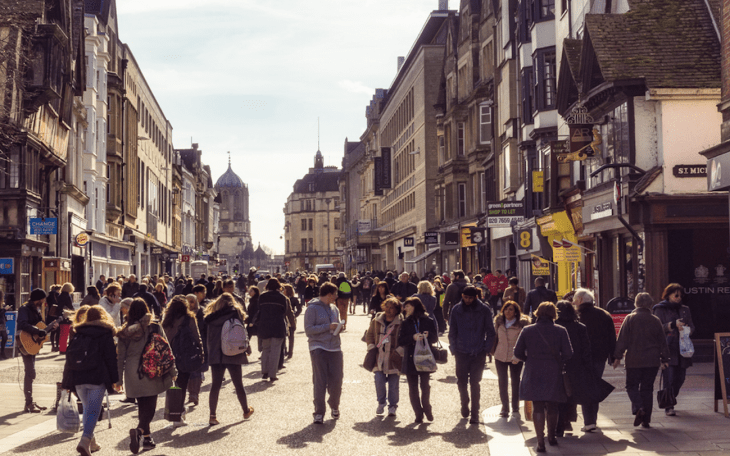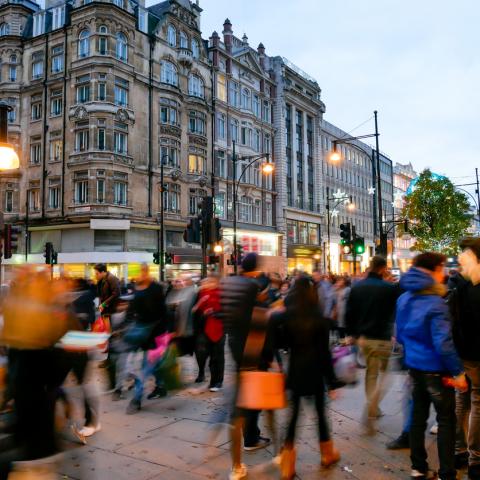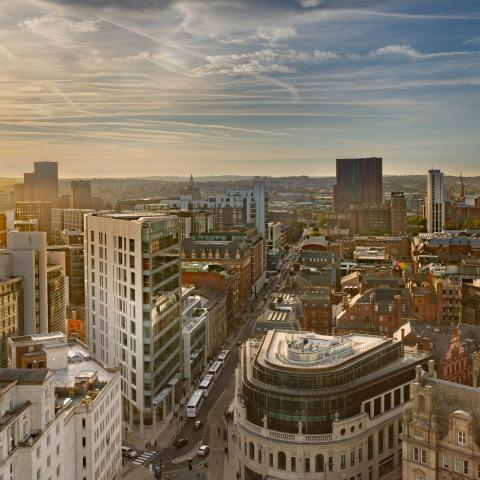Why retail real estate could be about to bounce back

Over the last decade, retail real estate as an asset class has been locked firmly in the doldrums as the rapid rise of e-commerce has sent retail property valuations and rents on a seemingly never-ending downward spiral. From the collapse of former FTSE 100 shopping centre landlord Intu, to swathes of household names disappearing from the high street forever, the outlook for traditional bricks and mortar retail has seemed to be eternally bleak.
But after years of struggling, signs are emerging that retail property’s darkest days could be behind it. In fact, Oxford Economics reckons that the sector will perform better than all other major corners of the market over the coming years, with annual returns from retail averaging 7.2% until 2027, ahead of industrial, residential, offices and hotels.
There are indications that after years of cutting back, retailers are expanding their physical space again. Driven in part by rock bottom rents and a new understanding of what physical retail space needs to deliver to be relevant to modern consumer lifestyles – from brand ‘showrooms’ where customers can touch and feel what they may ultimately buy online, click & collect, pop-up style spaces with rapidly changing stock displays, or places for in-person customer service – retailers think there is still very much a place for bricks and mortar retail today.
In January, M&S announced it will invest £480m to open 20 new shops by transforming former abandoned Debenhams stores on high streets and in shopping centres across the UK. Designed with ‘local families in mind’, the stores will be more spacious and have new M&S cafes, as well as sustainable initiatives like ‘Fill Your Own’, where customers can bring their own packaging for goods like cereals, rice, pasta, nuts, coffee and more. It’s an example of how retailers are investing to make their space fit for the modern world, combining it with leisure and reasons to visit other than just shop.
Online shopping – the force that has pulled consumers away from bricks and mortar stores in recent years – may have also finally reached its peak. ONS data shows online shopping as a percentage of retail sales was on a non-stop upward trajectory growing from virtually zero in 2006 to its peak at almost 40% in the lockdown days of 2020. But the figure has since dropped back down and hovered at around 25% – 30% over the last 12-months or so. Where it ultimately settles matters, because when it settles, retail real estate owners should start to see some stability in footfall to their assets again after over a decade of consecutive YOY declines in footfall. The jury is still out, but the pandemic accelerated the e-commerce trend and may have reached its peak. After all, if lockdowns didn’t drive you to permanently do more online shopping what will?
From an investment perspective, research from Nuveen Real Estate indicates an undersupply of high-quality retail space could well be on the horizon after years of little new development and conversion of space to other uses. The lower valuations and higher yields on retail assets also means they are far less sensitive to interest rate rises than assets in other real estate sectors. This will likely attract the attention of institutional investors.
But we should remember that the difference between prime retail destinations in locations with strong demographic profiles and secondary retail space in more provincial markets is stark – think Westfield vs. an 80s-built shopping centre on the edge of a small city. Some retail property may never recover and will need to be completely repurposed. But there are exciting investment opportunities to breathe new life into older secondary properties in strong locations. Last year, Ingka Centres completed the £170m transformation of Kings Mall, an old shopping centre in Hammersmith, into a new mixed-use ‘community destination’ with retail, F&B, co-working space, and areas for community events, relaxing and socialising.
After what has perhaps been the most volatile ten years retail real estate has ever seen, new thinking and approaches could mean the next ten years are one of the sector’s most exciting. Watching the strategies of leading retailers but also asset owners like British Land, NewRiver Reit, Hammerson and more will be fascinating.










